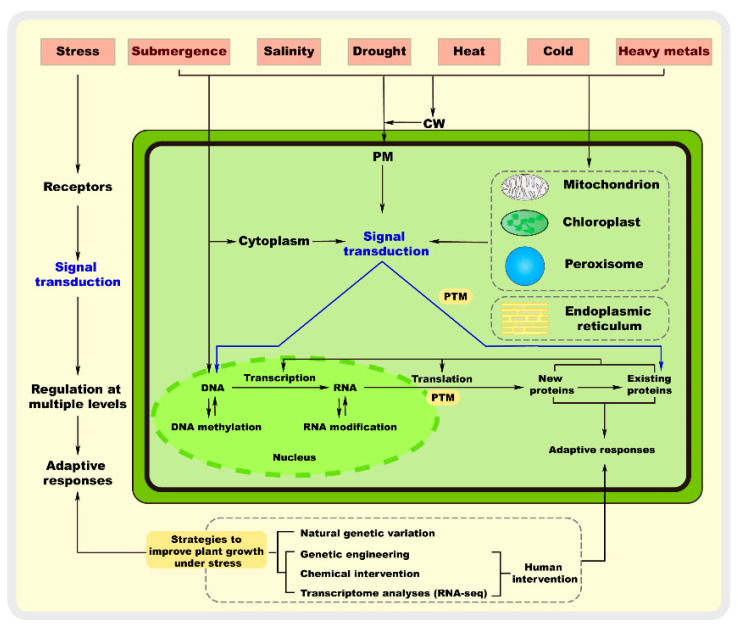Figure 1.
Plant resistance to abiotic stresses at the molecular level through sensing mechanisms and genetic responses. Abiotic stress can be perceived in different cellular compartments, including the cell wall (CW), plasma membrane (PM), cytoplasm, mitochondria, chloroplasts, peroxisomes, endoplasmic reticulum, and nucleus, leading to the initiation of molecular responses. These stress sensors then transmit the signals downstream through secondary messengers and regulatory proteins, such as Ca2+, ROS, and protein kinases. Furthermore, it is now well known that abiotic stress induces different responses involving stress sensing, signal transduction, and regulation at multiple levels. Therefore, plants have evolved mechanisms to adjust their growth to survive and reproduce under stress. PTM: post-translational modifications.

